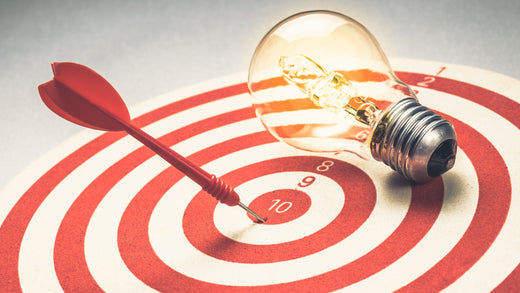Article: This is how you design an effective goal setting system

This is how you design an effective goal setting system
Setting goals is one of the most powerful tools we have for achieving success, whether it's personal development, athletic achievement or professional ambitions. But just setting a goal is not enough – an effective goal-setting system requires careful planning, continuous follow-up and a flexible approach to change. In this blog post, we'll explore how you can create a structured goal setting system, customized both for yourself and to help others achieve their goals.
Why do you need a goal setting system?
A goal setting system acts as a map that guides you or your mentees towards desired results. Without such a map, one risks getting lost in one's ambitions, with vague goals that do not provide the direction or motivation required to succeed. By building a systematic approach to goal setting, you can ensure that your goals are clear, achievable and motivating.
Three phases of the goal setting system
An effective goal setting system can be divided into three main phases: Preparation and planning , training and learning , and implementation and follow-up . Each phase plays an important role in ensuring that your goals are not only set but also achieved.
Phase 1: Preparation and planning
The first phase of the goal setting process is careful planning and preparation. This means that you identify your or your mentees' current abilities and needs, and that you define different types of goals that are relevant to development.
1.1 Assessment of abilities and needs:
To set realistic and meaningful goals, you must first understand where you stand right now. This means reflecting on past performance, identifying strengths and weaknesses, and mapping out which areas need improvement. If you're working with someone else, gather information about their background, strengths, and development needs.
1.2 Set goals in different areas:
A common trap in the goal setting process is to focus only on performance goals, such as improving one's time in a race or increasing sales numbers. But to create a more balanced and sustainable development, goals should be set in several different areas, such as individual skills, teamwork, physical fitness, and psychological skills. Below is a table with examples of how goals can be set in different areas:
|
Area |
Examples of goals |
|---|---|
| Individual skills | I will reduce my time by 0.4 seconds in the 400 meters by improving my start. |
| Law skills | Our football team at school should increase the percentage of successful passes from 74% to 82% by the middle of the season. |
| Fitness | I will increase my oxygen uptake from 3.7 L/min to 4.2 L/min by doing interval training three times a week for the next five months. |
| Enjoyment | I will enjoy competitions in other locations more by visiting a new restaurant and historical landmark in the new location. |
| Psychological skills | I will regain my confidence in sprinting by visualizing a successful start before each training session and rehearsing at least one positive self-statement. |
1.3 Identify influencing factors:
Before setting goals, it is important to identify factors that can influence the goal setting process. These factors can be both internal, such as motivation and discipline, and external, such as access to training facilities or time. For yourself, this may mean adapting the goals to your available time and resources. If you are helping someone else, make sure the goals are tailored to their specific situation and abilities.
1.4 Plan strategies for goal achievement:
Goal setting is not only a matter of defining what you want to achieve, but also of planning how to do it. This means developing specific and realistic strategies that will help you reach your goals. This can be by creating an exercise schedule, introducing new daily routines, or mental techniques that support your goals. If you're working with someone else, make sure these strategies are tailored to their needs and capabilities.
Phase 2: Education and learning
After laying the groundwork, it's time to implement the goal setting strategy and educate yourself or your mentees on how to effectively work towards their goals.
2.1 Schedule reflection time or meetings:
If you set goals for yourself, set aside regular time to reflect on your progress and adjust your strategy as needed. This helps you stay focused and ensures you are on the right track. If you are working with someone else, hold regular meetings to discuss their progress, identify any obstacles, and make necessary adjustments.
2.2 Focus on one goal at a time:
To avoid being overwhelmed, it may be wise to start with one goal at a time. This provides an opportunity to fully concentrate and build confidence before moving on to the next goal. If you are helping someone else, guide them by helping them focus on one goal at a time to ensure successful goal achievement.
Phase 3: Implementation, follow-up and evaluation
The final phase is about implementing the goals and continuously following up on them to ensure they remain relevant and achievable.
3.1 Implement and follow up on goals:
Once the goals have been set and the strategies have been developed, it is time to put the plan into action. This includes regularly following up on goals and providing feedback on progress. For yourself, this may mean tracking your progress daily or weekly. If you are working with someone else, make sure you regularly follow up and provide support during the process.
3.2 Evaluate and adjust:
Goal setting is a dynamic process. Regular evaluation and adjustment of the goals is necessary to ensure that they remain challenging but achievable. For example, if you quickly achieve a goal, you can raise the bar. If you or your mentee encounter obstacles, goals may need to be adjusted to remain realistic.
3.3 Provide support and encouragement:
Support and encouragement are essential to maintain motivation. For yourself, that might mean giving yourself praise when you make progress, and being kind to yourself when you encounter setbacks. If you are working with someone else, show interest in their progress, give positive feedback, and offer help when needed. A strong support network, whether internal or external, is often the key to achieving long-term success.
Summary - Build a sustainable goal setting strategy
Designing an effective goal setting system is a complex but necessary process to achieve long-term success. By carefully planning, training and following up on goals, you can create a structured path to success, whether it's your own development or helping someone else achieve their goals. The key to success lies in seeing goal setting as a dynamic and flexible process, where continuous evaluation and adaptation are essential to reach the set goals.



Leave a comment
This site is protected by hCaptcha and the hCaptcha Privacy Policy and Terms of Service apply.